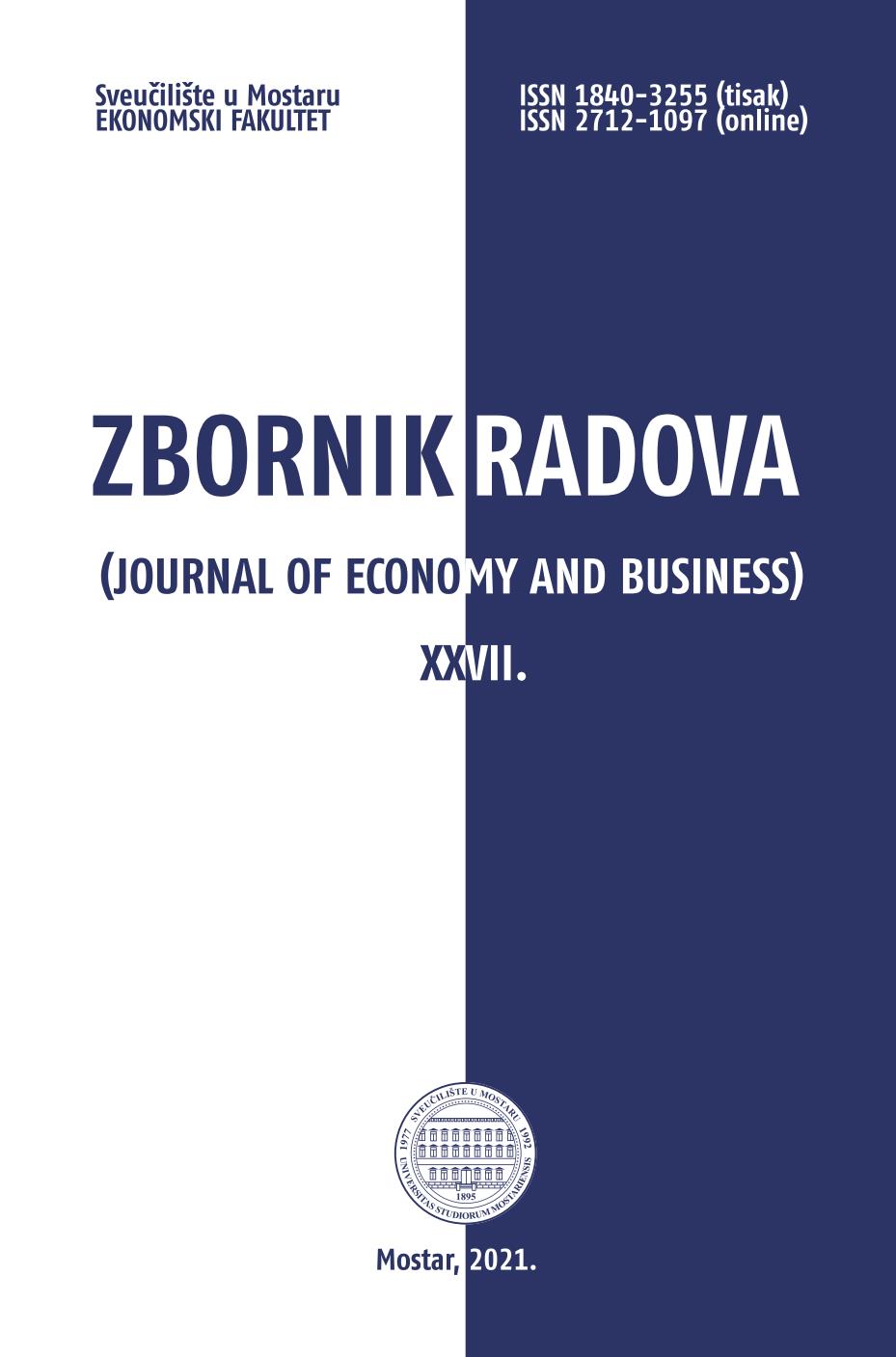INFLACIJSKA DINAMIKA NA PROSTORU BIVŠE JUGOSLAVIJE U PANDEMIJSKOM I POSTPANDEMIJSKOM RAZDOBLJU
INFLATION DYNAMICS IN THE AREA OF THE FORMER YUGOSLAVIA DURING THE PANDEMIC AND POST-PANDEMIC TIMES
Author(s): Željko Bogdan, Lucija Rogić Dumančić, Tomislav SekurSubject(s): National Economy, Supranational / Global Economy, Health and medicine and law, Financial Markets, Socio-Economic Research
Published by: Ekonomski fakultet, Sveučilište u Mostaru
Keywords: prices; contribution to inflation; southeastern Europe;
Summary/Abstract: During 2021, and especially in 2022, the period of low inflation in a large part of the developed world was interrupted. This article examines the annual inflation rates for the countries that emerged from the breakup of the former Yugoslavia between 2019 and 2024. Although they were part of a single political space during the 20th century, these countries are characterized by development diversities, so the share of expenditure on food and non-alcoholic beverages in the average consumer basket differs between them. The differences in these countries are reflected in the size of consumption inflation, but also in the contributions that contribute to it. Food and soft drink prices, housing costs and transportation costs (primarily fuel and lubricant prices) should certainly be mentioned as important generators of inflation. In the analyzed period, the largest cumulative increase in prices was recorded in Serbia (by 42% on average), and the smallest in Slovenia (by 23.7% on average) and Bosnia and Herzegovina (by 24.9% on average). All countries recorded an above-average increase in prices in the food and soft drinks segment, but the lowest cumulative increase was recorded in Slovenia (by 33.6% on average) and the highest in Serbia (by 58.66% on average). In the segment of housing costs, Croatia recorded the lowest cumulative growth (21.55% on average) and Serbia the highest (58.8% on average). In terms of transportation, the highest cumulative price growth was recorded by Serbia (23.9% on average) and Croatia (22.6% on average), and the lowest by Montenegro (12.1% on average) and Northern Macedonia (around 12.6% on average). The prices of food and beverages and housing costs had an important positive contribution to inflation. The highest level of inflation in all economies was in 2022, but its reduction (with the exception of Serbia) begins to be felt already during 2023. Despite the significant reduction in the average annual inflation rate in 2024, in the analyzed countries (with the exception of Slovenia and Kosovo) it is still higher than to the EU average.
Journal: Zbornik radova
- Issue Year: 2024
- Issue No: XXX
- Page Range: 52-76
- Page Count: 25
- Language: Croatian

